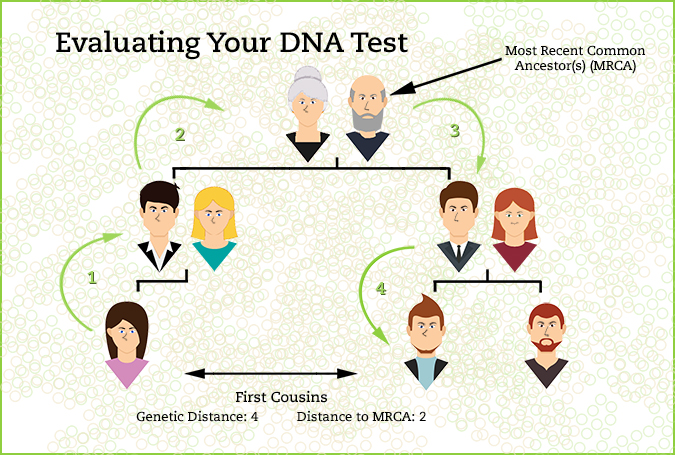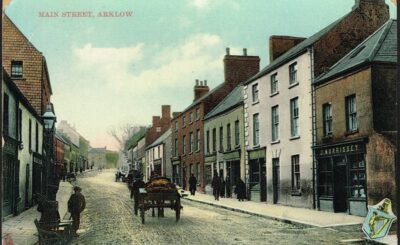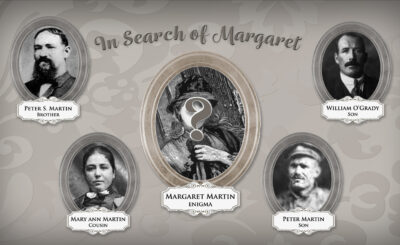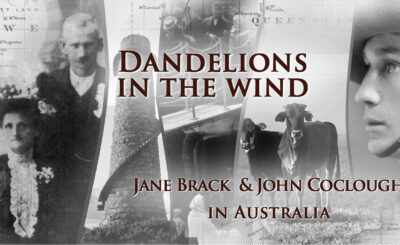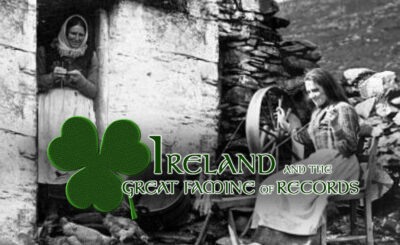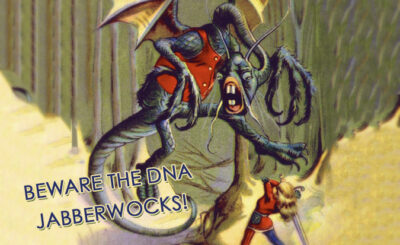I’m 42% Great Britain, 20% Europe South, 5% Asia South and the rest whatever? That doesn’t make sense. Grandma was 100% Dutch!
(Don’t worry; she is still your grandmother. Admixture results are typically WRONG-O.)
Next you look at all of your matches. First cousin, second cousin—who are all these people? Why do you care? What are you supposed to do now?
Interpreting DNA Test Results
“You mean you can do more with DNA than just find your ethnicity?”
I have heard this so many times. DNA testing is a powerful tool, capable of helping you bust through brick walls (which I have done), find biological family of adopted children (that too!), and connect with lost cousins all over the world (and that’s the best part!). But it takes some skill to figure it all out.
Often, a person gets excited to do testing and to get their DNA test results, but when they come in have no idea where to start.
Well, Not Your Grandmother is here to help!
First Things First
Here are some terms you’ll need to understand:
- Most Recent Common Ancestor (MRCA)— When you have a DNA match with someone, that means you and Matchee both possess identical segments of DNA. That can only happen if you both inherited that DNA from a common ancestor, say Great-grandma Hooligan. Obviously, if you and another person are both descended from Great-grandma Hooligan, you are also descended from her parents, grandparents, etc. back to Adam and Eve. However, what is most useful for family history research, is to find the Most Recent Common Ancestor. That is the point at which you and the Matchee’s family lines diverge and become different.
- Genetic Distance (or Meioses as Ancestry sometimes calls it)—Depending upon the amount of identical DNA you share with a match, you can predict how far away the MRCA is, although accuracy gets less with each generation back. A child inherits exactly 1/2 of its DNA from mom and 1/2 from dad, so a DNA test of a parent an child would show 3475 centiMorgans of shared DNA (on Ancestry’s scale) between them. That is a genetic distance of one.
For genetic distances > 1, however, the amount a child shares with an ancestor (grandparent, great-grandparent, etc.) is not exact as it is with parent and child. You will inherit about 1/4 of your DNA from a grandparent, but not exactly 1/4. DNA tests with child and grandparent = 1450 – 2050 cM of identical DNA. That is a genetic distance of two.
People who are first cousins will share from 680 – 1150 cMs—they are a genetic distance of four (See Fig. 1). Generally speaking, to find the genetic distance between you and a relative, you count back from you to the Most Recent Common Ancestor; then count down from MRCA to the other person. The sum of those two numbers gives the genetic distance and is, in fact, the number of times meioses occurred between you and the other relative you match with. - Generations to Most Recent Common Ancestor—For match-strength-evaluation, some services (such as Gedmatch) use the metric of how many generations back to MRCA. However, often your DNA match person will be of a different generation than you. For example, an aunt is a generation back from you; a niece is a generation down. The best way to evaluate your “generations back” is to simply divide the genetic distance by two. That gives an average of your distance and the match person’s distance back to the MRCA.
So for you and your first cousin’s child, Chloe Hooligan (your first cousin once removed), there are:- 2 generations between you and MRCA (your grandparents)
- 3 generation between MRCA and Chloe Hooligan (their great grandchild)
- Genetic distance of 5 (2 + 3)
- 2.5 generations back (5 divided by 2)
You and Chloe Hooligan are considered as having a common ancestor 2.5 generations back. (It’s actually impossible to have a common ancestor as a fraction of a generation! But it’s a handy tool for dealing with matches, so we’ll just have to pretend it makes sense!)
- First Cousin, Second Cousin Distance—Ancestry, MyHeritage, and FamilyTreeDNA use cousin-relationship as a measure for the strength of a DNA match (although it’s not the actual relationship for two people of different generations).
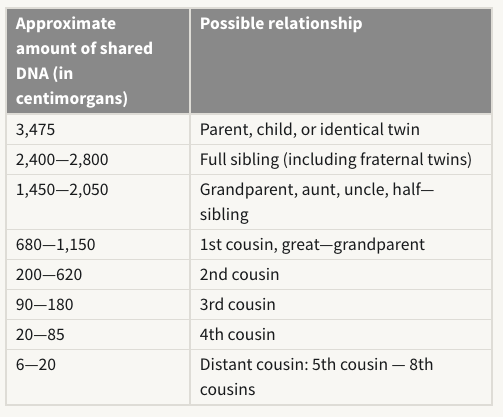
Fig. 2 From Ancestry.com: a chart showing genetic distance as “cousin relationship” with the expected range of shared DNA in centiMorgans.(Click to enlarge.) How does that work? First cousins share the same grandparents; they are a genetic distance of four from each other, and have a MRCA two generations back. Second cousins have the same great grandparents, are a genetic distance of four from each other, and have the MRCA two generations back.
If you have MRCA TWO generations back, you are FIRST cousins—subtract ONE from the generations back number (you should round it to a whole number) and that gives your cousinship.
In the above example, you and Chloe Hooligan are 2.5 generations back. That means on Ancestry, you would show up as first or second cousins.
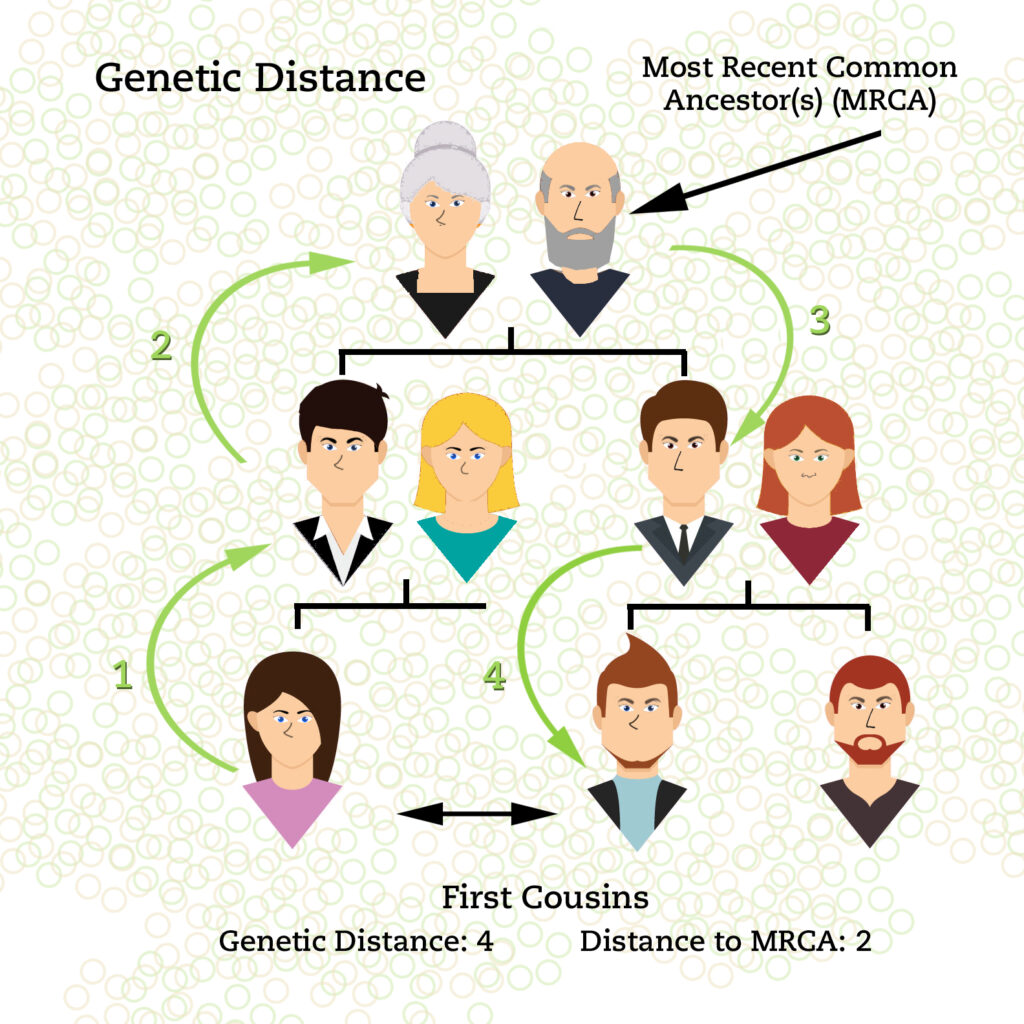
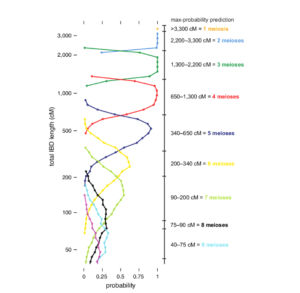
Next Tool: Your Family Tree
In order to analyze your DNA test results, you need to become familiar with your family tree. For example, everyone has four grandparents, and usually each has a different surname or maiden surname. If you look at the family tree of John F. Kennedy, you see his four grandparent names are Kennedy, Hickey, Fitzgerald and Hannon.
If John F. Kennedy had done a DNA test, he would want to sort each of his matches into one of the four groups, Kennedy, Hickey, Fitzgerald, or Hannon. Once he has discovered which family line a match is coming through, he’ll want to make a note of it. (This can be done by building a spreadsheet, or by writing a note for each match on the DNA Match page).
But How Do I Know Which Family Line a Match Belongs to?
There are several ways to figure out which group a match should be assigned to. Let’s start with the easiest ways first!
- Start with your strongest matches first. If it is a first or second cousin or closer match, you may know who the person is and how you’re related.
- Ancestry will give you clues by listing common surnames you and the matchee share—but only if both of you have attached family trees to your DNA results.
- If you aren’t sure by looking at the matchee’s name, check his or her family tree (if it is included). Do you recognize any of the names on the tree? Do any of the birth or death locations give clues?
- Finally, use the “Shared Matches” tab.
The Beauty of the Shared Matches Tab
The Shared Matches Tab does just that—it shows all of the people that both you match and the selected matchee person matches. Although it isn’t always true, if I match Fred and you match Fred, there’s a good chance you, Fred, and I have a common ancestor.
Using the example of John F. Kennedy above, if John discovers a match with a cousin, and he’s not sure how they are related, he can click on the Shared Matches tab. After doing so, perhaps he sees that some (or perhaps all) of the people listed he knows are Hickey descendants. Then there’s a good chance this new cousin is also a Hickey descendant.
Putting It All Together
Say you want to try to get further back on that one stubborn line that won’t budge. We’ll call it the Hooligan line.
- Pick a person that is a confirmed Hooligan descendant.
- Click on the Shared Matches tab and find a name that you don’t know how fits into your tree.
- Check the DNA Match strength and estimate how many generations back the MRCA is, and who the likely shared ancestor may be.
- Find records or other confirmation to support your hypothesis. Contact the matchee, if possible and appropriate, to see if her or she has further insights.
Happy Hunting! Questions and any experiences are welcomed in the comment section!

